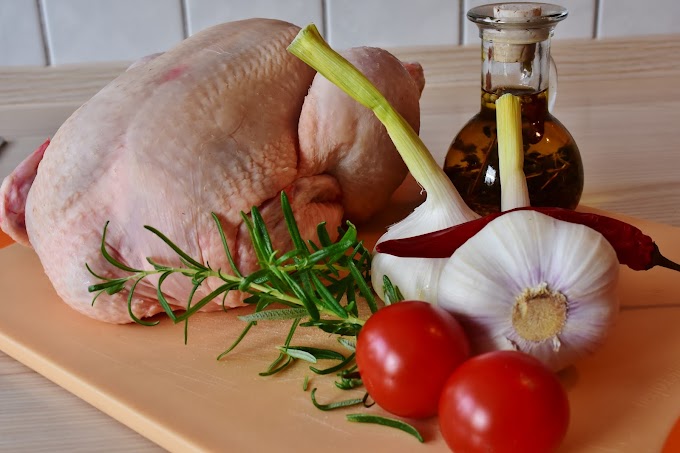Banquet And Catering Food Production Guide
In Banquet Foods are produced in volume i.e bulk food production took place. Its not a child play to manage quantity food production. With the economy in flux, it's no surprise that catering companies are having a hard time controlling food cost. When the cost of product goes up you can expect that the costs of catering equipment are also going to be on the rise - as well as the cost of doing business. Adjusting prices and passing the cost on to the customer is less than ideal, especially if you want to stay competitive. If you're feeling the economic pinch in your catering business then there's a good chance your customers are feeling it as well. The best way to control food cost is to take a close look at your operations to see where you can cut costs. Yes, you should look it closely.
Can Food cost be controlled?
Yes, you can control the Food cost. The main thing in banquet is you should remained focus and plan the menu accordingly. customers trend is to go for something unique, something fascinating. Customer is always right but that don't mean your customer always comes before business and your business. You also have money to make, tons of money to pay as wages and remuneration.
So, what may be the ideal menu in South Asia?
South Asian are meaty lovers. The trend is they want more meat items in functions and want to pay less. You should read their mind accordingly. If your host is polite and ready to pay good, 2 meat items in snack/starters seems fine. Offer Choice with 3/4 vegetarian snacks otherwise I suggest you to go normally for only 1 meat snacks and 3 vegetables snacks. If you have 2 meat items, 3 veg snacks and customer further request for another snacks, focus on light items like peanuts, papads, prawn crackers e.t.c. An ideal popular snacks/starters is French fry, veg pakoda, veg wonton, peanut sandheko and chicken chilli/chi fry or any chicken items of your choice.
Also, for main course we can offer rice, naan/bhataura, Mix veg curry, paneer item, chicken fry, daal, mutton curry, Tomato achar, pasta salad, papad fry, salad and papads. This is idel menu for most parties and if your customer asks for discount in this price you can opt him to cut chicken from list and go for mutton only and add one heavy item in menu which can be consumed before lunch/dinner.
Controlling the cost is vital. For that you should,
Cross-Integration of Ingredients
You should try to avoid stocking ingredients that only have single applications on your menu, where they play a role in only one or two dishes. This can make inventory control challenging, and increases the cost of your food control. Instead, work with dishes that use ingredients you can use across nearly the entire menu. This helps reduce food waste and can bring your food costs into check. If your starters chicken, you can use the carcass of chicken into chicks fry!
Look At Your Production Methods
Fresh herbs may very well be attractive options for cooking, and look great as a garnish but fresh purees that have been refrigerated or frozen, or dried herb, are excellent choices for the kitchen because of their long shelf life. These also work well for any dish that has a long, slow cooking process. For more expensive herbs, this is a smart process to control food cost. You don't want your herbs to cost you profits.
Size Matters
Instead of cooking in large quantities out of confidence, do small batch production so you can be more responsive to changing needs in the food production process. This also helps you stop over production. At the end of the day it's much easier to make a correction. Remember too that tighter production control promotes improved food safety and HAACP management, and helps you maintain better quality control standards.
Exit Strategies
If you know that your product is running out of time, then try to promote a special using those ingredients or menu items to your customers. For a caterer, this could be a reduced price on providing soup for an event. Treat this as an exit strategy that lets you get out from under product loss.
Know Your Shelf Life
If you have a standard menu for your catering business then you should know the shelf life of every item you have. If you order fresh for custom consumer menus then you need to make sure you're familiar with the shelf life of those products. This lets you minimize waste and optimize your food cost. Remember that smaller items are particularly susceptible to temperature and degrade faster than other items.
Plan Production Quantities
While most businesses and catering companies make their provisions for production based on previous clients, it's a good idea to revisit your calculations in comparison with waste to see if your production planning needs some modifications. If you can trim even 2% of the waste by altering your production then you're saving money. You should do proper indenting
See your menu wisely before you begin
It's a wise decision to see your menu wisely for instance, you should look for drinks/number of guests/their possible choices/adults/their nature. They will help you further in decision making.
We will be taking more on next article.
























2 Comments
hi
ReplyDeleteCatering food production involves the preparation and production of food for large-scale events, such as weddings, corporate functions, parties, and other gatherings. It requires careful planning, organization, and attention to detail to ensure that the food meets the expectations of the clients and their guests. Jacksons Catering Equipment Ltd is a Trusted Supplier of Top-Quality Brands of Commercial Catering Equipment and Commercial pass-through dishwashers in Northern Ireland and Ireland.
ReplyDeleteIf you have any doubts , please let me know